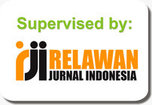Sentiment Analysis of YouTube Comments Toward Chat GPT
Abstract
Sentiment analysis is used for analyzing the emotions and attitudes expressed in text data. In this study, sentiment analysis is used to understand people’s enthusiasm toward Chat GPT. The primary objective of this study is to investigate the acceptance of people of new artificial intelligence technology, Chat GPT, that may change the future. To get a deep understanding of it, a large dataset of user comments from YouTube is collected and then data pre-processing is done by removing stop words, punctuations, and irrelevant information. Using Text Blob and VADER approaches, comments are classified into positive, neutral, and negative categories. The result shows that most users have a positive sentiment to receive and use Chat GPT. The contribution of this study is to provide insights into the sentiment of people’s response to Chat GPT, which can inform user acceptance of the language model development and give guide its future applications.
Keywords
Full Text:
PDFReferences
S. Zahoor and R. Rohilla, “Twitter Sentiment Analysis Using Lexical or Rule Based Approach: A Case Study,” ICRITO 2020 - IEEE 8th Int. Conf. Reliab. Infocom Technol. Optim. (Trends Futur. Dir., pp. 537–542, 2020, doi: 10.1109/ICRITO48877.2020.9197910.
M. M. Effendi, Z. Mustofa, and A. Turmudi, “Analisis Sentimen Masyarakat Indonesia Dalam Konflik Rusia-Ukraina Di Twitter,” Bull. Inf. …, vol. 3, no. 4, pp. 355–366, 2022, [Online]. Available: https://journal.fkpt.org/index.php/BIT/article/view/418%0Ahttps://journal.fkpt.org/index.php/BIT/article/download/418/261.
A. Guerra and O. Karakuş, “Sentiment Analysis for Measuring Hope and Fear from Reddit Posts During the 2022 Russo-Ukrainian Conflict,” pp. 1–23, Jan. 2023, doi: 10.3389/frai.2023.1163577.
R. Sandoval-Almazan and D. Valle-Cruz, “Sentiment Analysis of Facebook Users Reacting to Political Campaign Posts,” Digit. Gov. Res. Pract., vol. 1, no. 2, pp. 1–13, 2020, doi: 10.1145/3382735.
D. J. Algaraady and D. M. Mahyoob, “Public Sentiment Analysis in Social Media on the SARS-CoV-2 Vaccination Using VADER Lexicon Polarity,” Humanit. Educ. Sci. J., vol. 22, no. 22, pp. 591–609, Apr. 2022, doi: 10.55074/hesj.v0i22.476.
C. Villavicencio, J. J. Macrohon, X. A. Inbaraj, J. H. Jeng, and J. G. Hsieh, “Twitter sentiment analysis towards covid-19 vaccines in the Philippines using naïve bayes,” Inf., vol. 12, no. 5, 2021, doi: 10.3390/info12050204.
X. Guo and J. Li, “A Novel Twitter Sentiment Analysis Model with Baseline Correlation for Financial Market Prediction with Improved Efficiency,” in 2019 Sixth International Conference on Social Networks Analysis, Management and Security (SNAMS), Oct. 2019, no. 1, pp. 472–477, doi: 10.1109/SNAMS.2019.8931720.
H. Sudira, A. L. Diar, and Y. Ruldeviyani, “Instagram Sentiment Analysis with Naive Bayes and KNN: Exploring Customer Satisfaction of Digital Payment Services in Indonesia,” 2019 Int. Work. Big Data Inf. Secur. IWBIS 2019, pp. 21–26, 2019, doi: 10.1109/IWBIS.2019.8935700.
T. Pano and R. Kashef, “A complete vader-based sentiment analysis of bitcoin (BTC) tweets during the ERA of COVID-19,” Big Data Cogn. Comput., vol. 4, no. 4, pp. 1–17, 2020, doi: 10.3390/bdcc4040033.
D. T. Alamanda, A. Ramdhani, I. Kania, W. Susilawati, and E. S. Hadi, “Sentiment Analysis Using Text Mining of Indonesia Tourism Reviews via Social Media,” Int. J. Humanit. Arts Soc. Sci., vol. 5, no. 2, pp. 72–82, 2019, doi: 10.20469/ijhss.5.10004-2.
S. Desai and M. Han, “Social media content analytics beyond the text: A case study of university branding in Instagram,” ACMSE 2019 - Proc. 2019 ACM Southeast Conf., pp. 94–101, 2019, doi: 10.1145/3299815.3314441.
S. Biswas and S. Ghosh, “Drug Usage Analysis by VADER Sentiment Analysis on Leading Countries,” Mapana J. Sci., vol. 21, no. 3, pp. 1–15, 2022, [Online]. Available: https://journals.christuniversity.in/index.php/mapana/article/view/3435.
U. Mehta and D. Verma, “Sentiment Analysis of Facebook Using Textblob and Vader,” J. Innov. Eng. Res., vol. 4, no. 1, pp. 10–14, 2021.
F. Illia, M. P. Eugenia, and S. A. Rutba, “Sentiment Analysis on PeduliLindungi Application Using TextBlob and VADER Library,” Proc. Int. Conf. Data Sci. Off. Stat., vol. 2021, no. 1, pp. 278–288, 2022, doi: 10.34123/icdsos.v2021i1.236.
R. F. Alhujaili and W. M. S. Yafooz, “Sentiment Analysis for Youtube Videos with User Comments: Review,” Proc. - Int. Conf. Artif. Intell. Smart Syst. ICAIS 2021, pp. 814–820, 2021, doi: 10.1109/ICAIS50930.2021.9396049.
A. N. Muhammad, S. Bukhori, and P. Pandunata, “Sentiment Analysis of Positive and Negative of YouTube Comments Using Naïve Bayes-Support Vector Machine (NBSVM) Classifier,” Proc. - 2019 Int. Conf. Comput. Sci. Inf. Technol. Electr. Eng. ICOMITEE 2019, vol. 1, pp. 199–205, 2019, doi: 10.1109/ICOMITEE.2019.8920923.
“Social networks with the most users worldwide in 2023,” Statista Research Department, 2023. https://de.statista.com/statistik/daten/studie/181086/umfrage/die-weltweit-groessten-social-networks-nach-anzahl-der-user/#statisticContainer (accessed Apr. 26, 2023).
S. Taj, B. B. Shaikh, and A. Fatemah Meghji, “Sentiment Analysis of News Articles: A Lexicon based Approach,” in 2019 2nd International Conference on Computing, Mathematics and Engineering Technologies (iCoMET), Jan. 2019, pp. 1–5, doi: 10.1109/ICOMET.2019.8673428.
O. Iparraguirre-Villanueva, V. Guevara-Ponce, F. Sierra-Liñan, S. Beltozar-Clemente, and M. Cabanillas-Carbonell, “Sentiment Analysis of Tweets using Unsupervised Learning Techniques and the K-Means Algorithm,” Int. J. Adv. Comput. Sci. Appl., vol. 13, no. 6, pp. 571–578, 2022, doi: 10.14569/IJACSA.2022.0130669.
C. Leiter et al., “ChatGPT: A Meta-Analysis after 2.5 Months,” Feb. 2023, doi: 10.48550/arXiv.2302.13795.
V. Bonta, N. Kumaresh, and N. Janardhan, “A Comprehensive Study on Lexicon Based Approaches for Sentiment Analysis,” Asian J. Comput. Sci. Technol., vol. 8, no. S2, pp. 1–6, 2019, doi: 10.51983/ajcst-2019.8.s2.2037.
DOI: http://dx.doi.org/10.26623/transformatika.v21i2.7033
Refbacks
- There are currently no refbacks.
| View My Stats |
Jurnal Transformatika : Journal Information Technology by Department of Information Technology, Faculty of Information Technology and Communication, Semarang University is licensed under a Creative Commons Attribution 4.0 International License.









